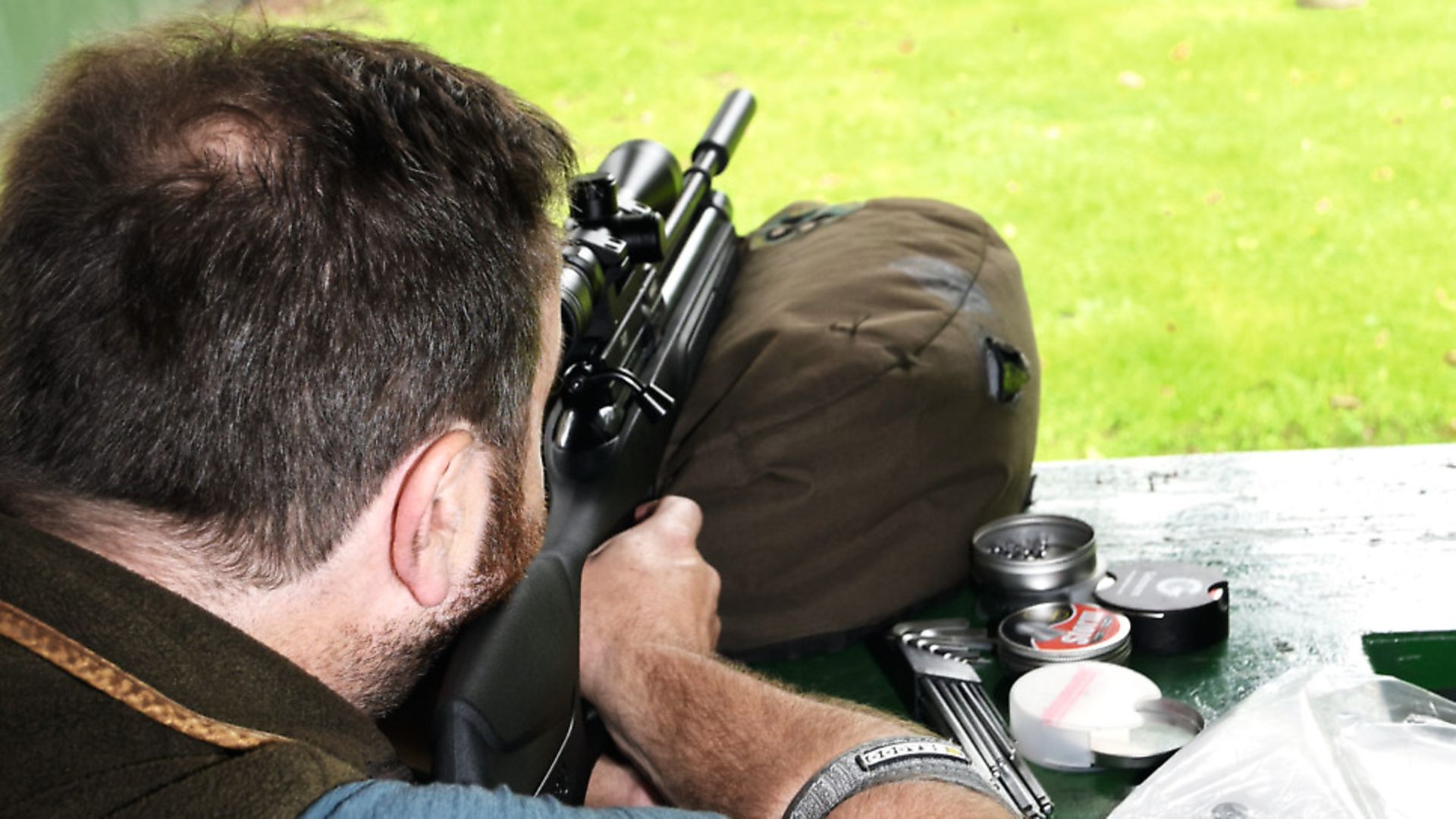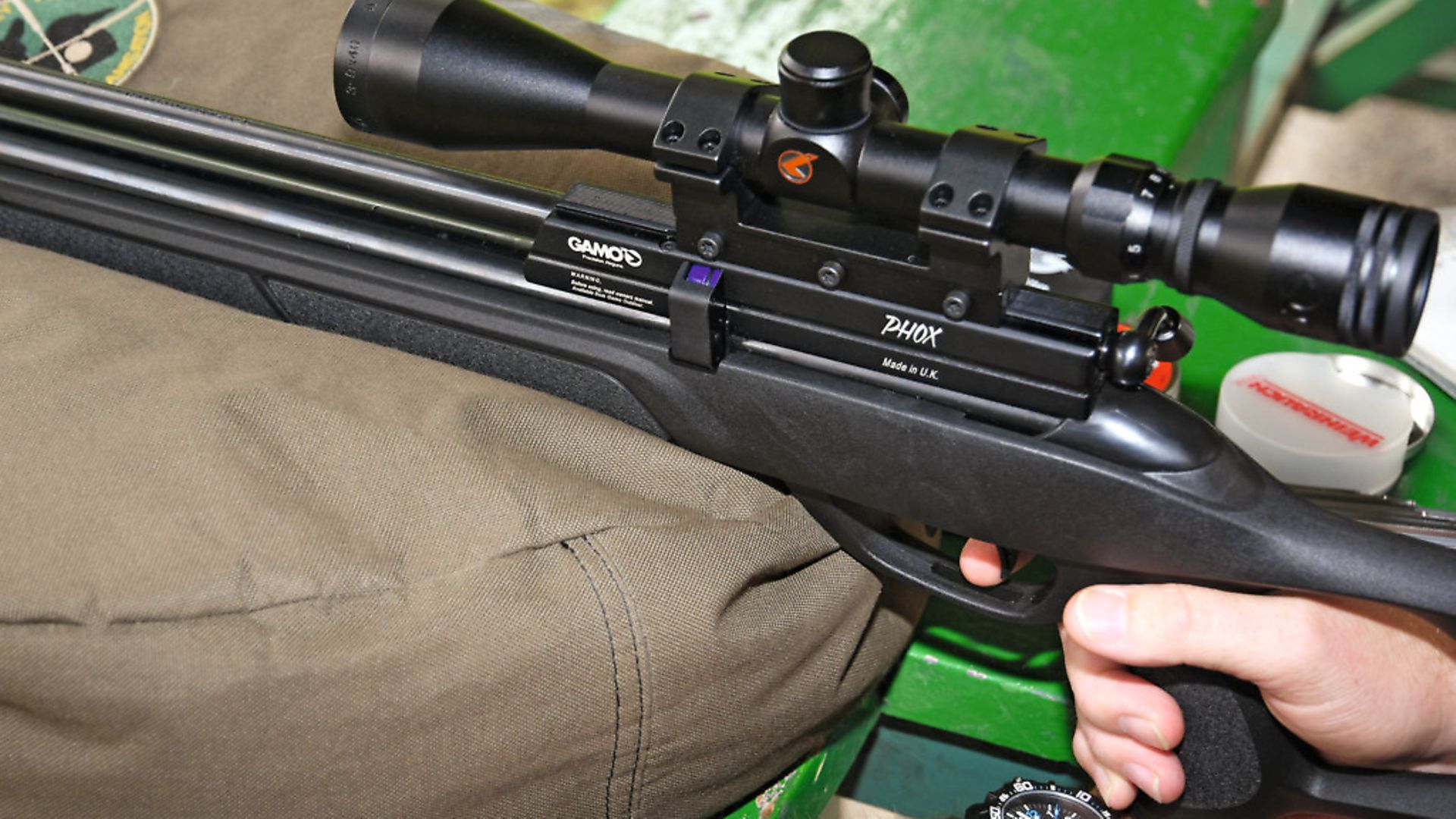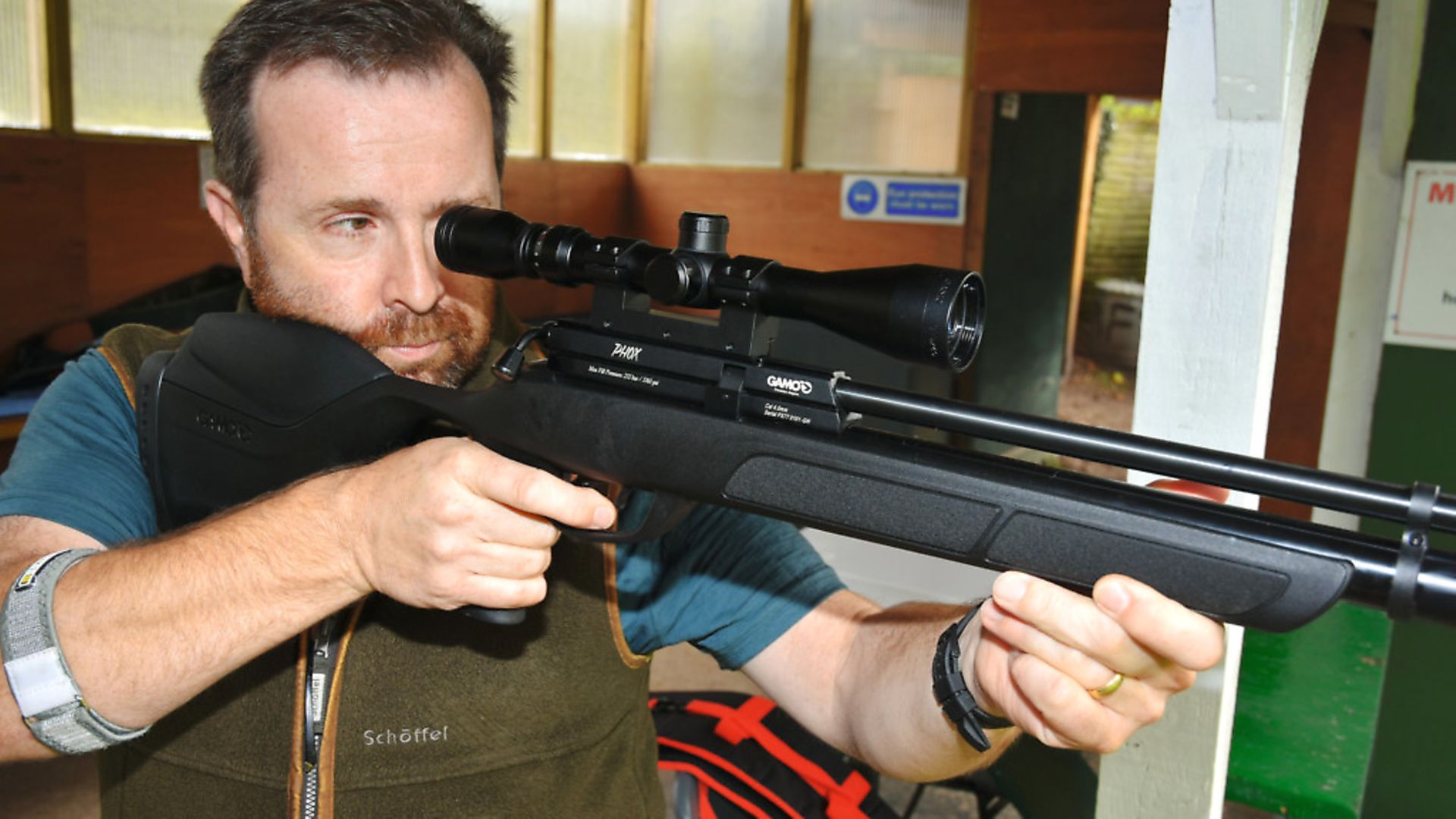Can you really buy a full PCP system for under £500?
 credit: Archant
credit: Archant
When Gamo first teased me with snippets of information about the upcoming Phox, I have to confess that couldn’t understand why they seemed so excited. To me, it seemed like a high-quality, modern pre-charged pneumatic (PCP) rifle, but … well...so what? There are plenty of other rifles like that, but I was missing the point. The Phox isn’t just a rifle, it’s a complete shooting system that has everything, and I do mean ‘everything’ that you need to go shooting tomorrow, as long as the shop throws in a tin of pellets.
In the package you get; the rifle, a sturdy one-piece mount, a 3-9 x 40 scope, a silencer, a substantial metal pump and stylish Gamo-branded slip to carry the lovely new rifle in, and all for less than £500! I truly could not believe what they were telling me. At first I thought they were pulling my leg, but no, the kits were soon heading to shops and waiting customers. To say that they’re now selling well comes nowhere close to describing the reality of the huge volumes that are flowing out of the factory door.
The rifle is made in England and the quality shows from the moment you pick it up. I’m not at liberty to say who makes it, but the magazine also fits BSA rifles, so I don’t think I need say more. For me, this is great news because I know just how well those chaps can build a PCP. The early Phox was made in .22 only because that’s where the majority of sales are even today, and the silencer was moulded onto the barrel. Soon the message started getting back to the factory that customers were asking for .177 rifles, so plans were made to start offering them.
Customers also asked if the silencer could be made removable, which of course it could, but at added cost. However, with sales doing so well the team decided that a removable silencer could be included and the Phox Silenci was born. You can still have a .22 if you prefer, but at 12 ft.lbs., I shoot .177 for almost everything, so this move suited me. I prefer the flatter trajectory offered by the fast-flying pellet, which helps me to place mine more precisely.
The silencer looks just a little different to the most common dimensions on the market, because it’s slimmer, which makes it look unusually long when, in fact, it isn’t. It’s an all-metal design and with its durable, power-coated finish should be well up to the rough and tumble of a hunting gun’s life. It muted the muzzle crack and the action is quiet too. The barrel is hammer-forged with the ½” UNF thread for the silencer cut in, meaning that you’ll be able to fit almost any other silencer on the market, if you choose to change.
Synthetic stocks make a great deal of sense for a hunting gun because they’re impervious to water, mud and blood, as well as being very strong. The styling of the Phox’s one is very conventional in the fore end, and quite dramatic at the rear. The pistol grip is very close to vertical, delivering my finger nicely to the trigger blade. In front of this we find the manual safety, which I like. It allows you to disengage it as you come to aim and is silent in operation. It’s also ambidextrous as is the stock, with only the bolt being right-handed.
 credit: Archant
credit: Archant
Dramatic looks
Adding to the dramatic looks, the synthetic trigger blade is stylishly tapered with three holes through the stiffening rib to save weight. The need for lightness comes about because, in America, new guns are subjected to a test in which the rifle with its action cocked is dropped on to a hard surface, butt first. This is intended to replicate an accident and to see of the gun will go off. A light trigger blade has less inertia and is better able to resist the force.
The trigger’s action was smooth and consistent, if rather long. It’s normal and quite sensible to set triggers on the safe side, especially if they’re going to be used by people new to shooting. I’m sure a skilled gunsmith could work some magic on the unit later when you’ve become used to the rifle, if you felt it needed improvement.
The cheek piece is set quite high, as it should be on a rifle designed for scope use only. At a glance, it appears to be height adjustable, but it isn’t. Along the sides of the fore end and pistol grip there are textured panels designed to aid grip, a job they do effectively. The whole surface of the stock is subtly textured, which eliminates reflections and I like it. It looks just right to me and complements the silencer nicely.
Getting a multi-shot, bolt-action at this price is clearly very good news and this one work effectively and smoothly, to boot. The bolt handle is chunky and rides on a thick shaft that exhibits no wobble or flex. As mentioned earlier, the magazine appears identical to the current generation BSA ones that I know very well. There’s a bit of a knack to loading them, but it’s easily learned. The inner cylinder is made from a self-lubricating, synthetic material and there’s an ‘O’ ring to hold the pellets in the correct position. I’ve used these extensively and found them completely reliable. A nice added touch is a small hole that is drilled in the face plate, which displays a brightly coloured dot as the last pellet lines up. This can be seen whilst on aim, and quickly tells you it’s time to reload. This is important because once you’ve fired the last pellet it’s possible to cock the action and fire again, and believe me, I’ve missed more than a few rabbits by making that mistake. Shooting air at them isn’t effective!
 credit: Archant
credit: Archant
Air pressure
To fill the reservoir, you slide a synthetic collar forward that exposes the port. The collar comes off completely so you need to be sure that it’s refitted correctly or it could be lost. The probe needs to be fitted to the hose on the pump and then inserted into the port. The trick to using a pump to fill your PCP is to go relatively slowly and ensure that you bottom out the handle on each stroke. If you go fast you often don’t get the full volume of the stroke into the reservoir, and you also build up heat which is quite literally wasted energy. It’s also wise to keep your arms straight and to lower your body weight onto the handle rather than pumping with your arms which will tire quickly. This rifle has a maximum filling pressure of 232bar, higher than the industry average, and from this we can expect 70 shots in .177, and perhaps a few more in .22. At the front of the reservoir is a pressure gauge which is something I believe that every PCP should have. You can see at a glance how much air you have left and when you’ll need to refill the reservoir.
The pump included is sturdily built, but cleverly, has folding feet that make it easier to pack up. I was pleased to see a quick-couple, Forster-style female connector protected by a neat metal plug that appeared to be made from copper. I believe that it’s vital to keep dust and debris out of the hose and I use plugs on all my connectors.
Although the stock makes the Phox look quite chunky, the complete package weighs at a handy 7.7lbs complete with the scope and silencer, just right for a hunting gun in my book. It has enough mass to be stable on aim but is light enough to carry for hours in the field.
Speed
Before I began my accuracy test, I chronographed the Phox with my standard test pellet, the Air Arms Field Diablo (8.44 grains). Average velocity was 765 fps, which calculates to a muzzle energy of 10.9 ft.lbs. I always find it a good sign when I’m able to zero a rifle and scope combination quickly and the Phox was spot on in moments. At 25 yards, it was immediately printing neat, one-hole groups from the bench with little effort from me other than adjusting to the trigger pull. Although it’s long in the second stage, it’s completely predictable, which is what matters most. Being a PCP it’s almost completely recoilless, which makes hitting your target so much easier and you can comfortably see the pellet strikes. The 3-9 x 40 scope offered a nice bright picture even at full power, but because it is not parallax adjustable it wasn’t possible to get perfect focus.
The scope sits in a one-piece mount for maximum strength and security. This is possible because the magazine sits low in the action so the rail is uninterrupted along its length. This makes fitting scopes or night vision units supremely easy. Any optic with any mount will bolt straight on without compromise.
I think this is a superb package, each part working perfectly with all the others. For me, it ends the argument about whether you should buy a PCP or a springer. The rationale for choosing a springer was often that PCPs were too expensive, but the Phox Silenci sells for under £500, bringing recoilless, quiet performance into the reach of many more people. This is a proper hunting gun with excellent performance straight from the box, and it’s built right here in Britain which adds to the pleasure for me no end, and I’m told that they’re in the shops right now.
Specification
Manufacturer: Gamo
Country of manufacture: England
Model: Phox Silenci
Type: Pre-charged pneumatic
Action: Bolt-action, magazine-fed
Fill pressure: 232bar
Trigger: Two-stage
Calibre: .177 & .22
Length: 41” (104cm)
Weight: 7.7lbs (3.5kg)
RRP: £449.00
Spare magazine: £46.20
Kit includes: A Phox rifle, 3-9 x 40 scope, one-piece mount, screw-on silencer, gun slip, pump
See more gun tests in the Gamo range here...
Gamo Superpower
Gamo Force 15 PT77
Gamo PT-85